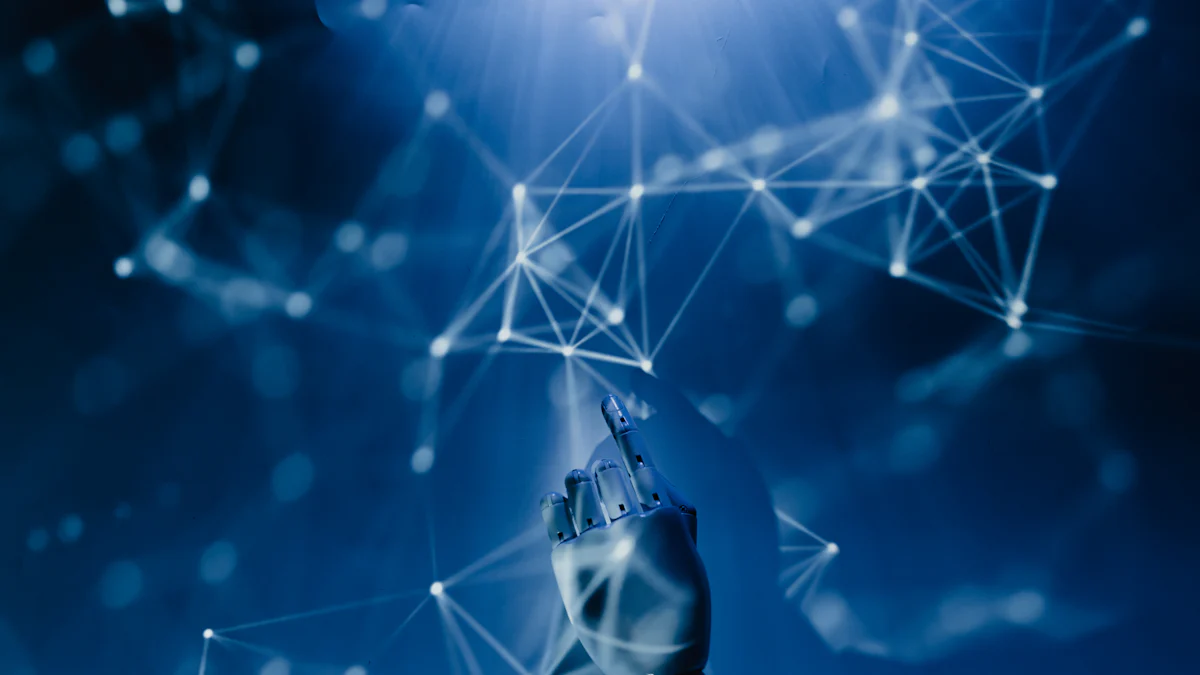
Artificial Intelligence (AI) continues to advance, shaping various industries with its transformative capabilities (opens new window). In this landscape of innovation, RAG with AutoGen (opens new window) stands out as a key player. AutoGen supports conversable agents (opens new window) powered by Large Language Models (LLMs) (opens new window), enhancing their capabilities through automated chat. On the other hand, RAG with AutoGen combines language models with external knowledge retrieval to refine AI-generated content (opens new window). The significance of these technologies in AI is profound, revolutionizing the way AI agents interact and generate information.
# The Role of AutoGen
# AutoGen Overview
# Definition and Purpose
AutoGen, a cutting-edge technology in the AI landscape, revolutionizes conversable agents by enhancing Large Language Models (opens new window) (LLMs) through automated chat. Its primary purpose lies in simplifying the creation of chatbots that can communicate with external tools and APIs seamlessly. By enabling these agents to collaborate effectively, AutoGen transforms the way tasks are performed collectively.
# Key Features
Collaborative Chatbots: AutoGen facilitates the development of multiple agents that can interact with each other to solve tasks efficiently.
Enhanced Capabilities: The framework empowers AI agents to access external resources, broadening their scope of knowledge and problem-solving abilities.
# AutoGen in AI
# Applications
Streamlined Customer Support: AutoGen enhances customer service by providing instant responses and solutions through automated chat interactions.
Efficient Task Automation: It enables the automation of various tasks by integrating AI agents with external tools for seamless execution.
# Benefits
Improved Efficiency: By automating processes, AutoGen significantly improves operational efficiency.
Enhanced User Experience: Users benefit from quick and accurate responses, leading to a more satisfying interaction with AI-powered systems.
# The Role of RAG
# RAG Overview
# Definition and Purpose
Retrieval Augmented Generation (RAG) (opens new window) is an innovative AI framework that enhances the capabilities of Large Language Models (LLMs) like ChatGPT (opens new window). By retrieving facts (opens new window) from external knowledge bases, RAG ensures that AI-generated content is accurate, up-to-date, and free from hallucinations. This architecture augments LLMs by incorporating an information retrieval system, providing essential grounding data for formulating responses effectively.
# Key Features
Grounding Data Control: RAG allows enterprises to constrain generative AI (opens new window) to their specific content sources, including vectorized documents and images. This control over grounding data ensures that AI responses are tailored to enterprise needs.
No Extra Training: Unlike traditional models, RAG does not require additional training for the Large Language Model. The pre-trained model generates responses augmented by information retrieved from the external knowledge base.
# RAG in AI
# Applications
Enhanced Information Retrieval: RAG improves the accuracy and relevance of information retrieved by AI systems, leading to more precise responses.
Customized Enterprise Solutions: Enterprises can utilize RAG to tailor AI-generated content specifically to their business needs, ensuring consistency and accuracy in communication.
# Benefits
Precision and Accuracy: By leveraging external knowledge bases, RAG enhances the precision and accuracy of AI-generated content.
Tailored Responses: Enterprises benefit from customized responses that align with their specific content sources, enhancing communication effectiveness.
# RAG with AutoGen (opens new window)
# Integration of RAG with AutoGen
Successful integration of RAG with AutoGen results in a powerful synergy that enhances text generation capabilities. By combining searching, enhancement, and sentence creation, these technologies revolutionize the landscape of AI content generation. The collaborative nature of RAG with AutoGen allows for a seamless flow of information retrieval and processing, leading to more accurate and contextually relevant outputs.
# How They Work Together
Enhanced Information Retrieval: RAG retrieves essential facts from external knowledge bases, providing valuable grounding data for AutoGen to generate informed responses.
Seamless Collaboration: The integration ensures smooth communication between the two technologies, enabling a continuous exchange of data for improved content quality.
Efficient Content Generation: By leveraging the strengths of both systems, RAG with AutoGen streamlines the process of content creation, resulting in coherent and precise outputs.
# Synergies and Enhancements
Optimized Knowledge Retrieval: The combined approach enhances the accuracy and relevance of information retrieved, leading to more insightful content generation.
Streamlined Workflow: By working in tandem, RAG with AutoGen simplifies the content creation process, allowing for efficient task completion and enhanced productivity.
Improved Response Quality: The collaboration between these technologies ensures that AI-generated responses are tailored to specific needs, enhancing user experience and satisfaction.
# Impact on AI
- Improved Capabilities
With enhanced information retrieval mechanisms, AI systems powered by RAG with AutoGen exhibit superior performance in generating accurate and contextually relevant content.
The integration leads to a significant improvement in response quality and overall efficiency, positioning AI agents as reliable sources of information.
- Future Prospects
The future outlook for AI technology utilizing RAG with AutoGen is promising, with continued advancements expected in content generation accuracy and speed.
As these technologies evolve further, we anticipate a transformative impact on various industries through more intelligent AI applications.
AutoGen revolutionizes conversable agents by enhancing Large Language Models (LLMs) through automated chat, simplifying chatbot creation and improving operational efficiency.
RAG, with its innovative architecture, combines searching, enhancement, and sentence creation to refine text generation tasks and enhance the precision of (opens new window) AI-generated content.
The combined impact of AutoGen and RAG on AI showcases a transformative synergy that leads to improved response quality and streamlined workflow processes.
Future developments in AI technology leveraging AutoGen and RAG are promising, with continued advancements expected in content generation accuracy and tailored responses.